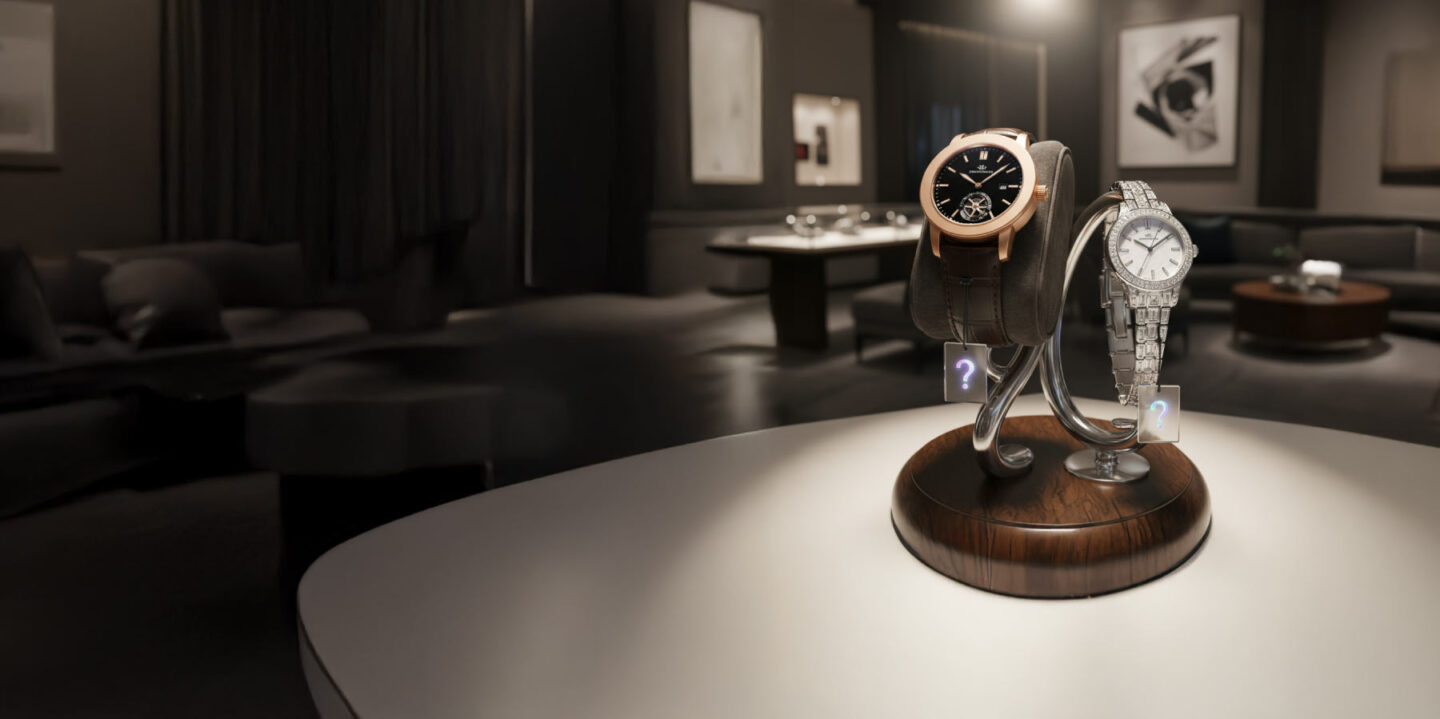
Why AI ethics is now a competitive advantage
IMD’s 2025 AI Maturity Index shows how the most advanced companies have embedded ethics frameworks as part of their cross-functional strategies....

by Stéphane J. G. Girod Published September 17, 2025 in Geopolitics • 7 min read
Few industries embody Switzerland’s blend of tradition and global reach like watchmaking.Yet in just six months, tariffs on exports to the United States have jumped from zero to 39%. The U.S. is Switzerland’s second-largest export market for watches, worth CHF 2.4bn in the first seven months of 2025 – accounting for around 15% of total exports – according to the Fédération de l’Industrie Horlogère Suisse. For many brands, this represents more than an added cost burden; it is a direct test of adaptability.
The outlook is uncertain. Negotiations may ease tariffs, but insiders broadly agree that the downturn in global watch sales could persist until at least 2027, a prediction based more on the state of stocks in-house than on the potential real economic and societal conditions in the world. Resilience and reinvention are therefore urgent priorities, regardless of how trade talks unfold.
Most executives are reluctant to comment publicly. This reflects both Switzerland’s culture of discretion and the sensitivity of ongoing talks with the United States. With no unified industry response, each brand faces different exposures depending on its distribution model, pricing, and customer base. Speaking out too strongly risks undermining negotiations or sending the wrong signal to clients, investors, and competitors.
Several industry insiders spoke to me only on condition of anonymity, but their perspectives illustrate how watchmakers are adjusting to this new reality.

Behind the scenes, executives acknowledge one thing: there is no single formula for navigating this shock. The director of industrial production for a large watch and jewelry brand explained that they had deliberately overstocked the U.S. market for several months.As a strong, high-margin player, they can afford, if tariffs persist, to pass part of the additional cost on to customers. Smaller or weaker houses, however, lack this buffer. Many groups already have staff on partial furlough, while suppliers and equipment makers are among the most exposed.
Public responses have been rare, though Swatch made headlines by releasing a tongue-in-cheek “Tariff Watch” lampooning US policy. While largely symbolic, the move underscores how unusual it is for Swiss brands to address the issue openly.
Some observers noted that certain leading brands appeared to accelerate shipments into the U.S. ahead of the tariff deadline, stockpiling to cushion the blow. In contrast, Christopher Ward publicly announced it would roll back a 29% US price increase after restructuring with a US subsidiary: a concrete illustration of how structural agility can blunt the impact. Most others have stayed silent, adjusting quietly in the background.
Inside boardrooms, management teams are also mobilizing in quieter ways. Some have created task forces of internal talent to model “what if” and “what next” scenarios. Others are seeking detailed legal advice, while a few are exploring ways to dissociate the intangible value of their brands – marketing, storytelling, and reputation –from the purely mechanical value of timepieces, all to reduce the impact of duties.
These divergent strategies reveal the industry’s fragmentation. Some brands, protected by wholesale distribution structures, can absorb much of the shock; those relying on direct-to-consumer models are far more exposed.
In short, the immediate tactics may differ, but the long-term implications are consistent: US tariffs are intensifying pressure on pricing, margins, and value creation. They are also sharpening polarization and highlighting the risks of over-reliance on the American market.For watchmakers and leaders in other industries, adaptability has become the real currency of resilience.

“In other words, tariffs don’t just raise prices; they widen the gap between those who can absorb the shock and those who cannot.”
The divide within the industry is already clear. Consumers with more discretionary money will care less about higher prices, meaning very high-end watches, those priced above CHF35,000 ($38,850), are relatively insulated. It is the CHF 3,000–15,000 ($3,330–$16,650)segment that is most vulnerable, especially as the middle class has been under pressure for years. Watches above CHF 3,000 ($3,330) account for the bulk of export value, but it is this middle tier that risks losing its customers.
The CEO of a prominent consultancy to watch and jewelry brands noted that brands selling under CHF 15,000 ($16,650), often bought with a year-end bonus or salary, are likely to be hardest hit. Smaller independents, lacking the backing of a group, face the greatest risk of consolidation or acquisition.
In other words, tariffs don’t just raise prices; they widen the gap between those who can absorb the shock and those who cannot.

For others, the tariffs are part of a bigger reset whereby prices need to go up further: the“true price of luxury.” Since 1986, the price of bread has multiplied 14 times. Watches and luxury products, by contrast, have only gone up five to 10 times, thanks to industrial efficiencies, shared the CEO of a big group watch brand. Consumers have come to expect personalization, long guarantees, and services without paying for them. Rising material costs, especially gold, now squeeze margins further.
This is consistent with broader luxury trends. According to Bain & Altagamma, the global luxury market was flat in 2024 at €362bn ($391bn) after years of strong growth. The United States still represents about 30% of global sales, but its momentum has slowed, while Asia has become increasingly important. Rising input costs, inflation, and supply chain complexity are eroding margins across the sector, leaving watchmakers with less room to maneuver.
The risk is a widening value gap.
The risk is a widening value gap. The director of industrial production for a large watch and jewelry brand warned that prices have risen faster than perceived value. They pointed to Porsche’s 997 model, which improved performance and efficiency by 18% over its predecessor.
In contrast, watches have seen prices increase without equivalent innovation. Margins are too tight to fully absorb tariffs, but passing them on risks pricing out the middle tier. If consumers conclude they are paying more without getting more, desirability fades, a risk that stretches far beyond Swiss watchmaking.
In other industries, like jewelry, companies might shift production across countries to avoid tariffs.As the CEO of a big group watch brand explained, agility often means creating options. But for Swiss watchmakers, the “Swiss made” constraint removes that option. Adaptation must there fore come from rethinking pricing, value creation, and channel strategy.
According to the Fédération de l’Industrie Horlogère Suisse, exports to China fell 7% in the first seven months of 2025, while Hong Kong (+6%) and Japan (+5%) recorded growth. This shift underscores how fragile reliance on a single market can be. For many brands, Asia is no longer about one giant economy but a mosaic of regional opportunities.
At the same time, American consumers are adjusting their behaviour. Industry insiders expect more purchases abroad or in duty-free locations (the Caribbean traditionally a favorite for Americans) as tariffs make domestic prices less attractive. That complicates demand forecasting but also opens the door to new sales channels.
For watchmakers, diversification must therefore extend beyond geography. It is about balancing wholesale and retail exposure, cultivating international travel retail, and deepening engagement with high-value clients who are increasingly mobile. In an industry constrained by the “Swiss made” label, resilience cannot be about shifting production; it must come from creative market strategies and the ability to seize demand wherever it emerges. Whether or not prices go up, the perceived value equation needs to be solved.
In this environment, diversification is no longer optional; it is the only path to resilience.
The lesson applies well beyond luxury.
What emerges from these interviews is not only a picture of strain, but also of renewal. In disrupted markets, flexibility at the brand level often outperforms centralized, one-size-fits-all strategies. Tariffs may accelerate a broader trend: luxury becoming more selective about whom it sells to, and more willing to reflect the real cost of its products. To sustain desirability at higher prices, brands will need to be less transactional and more inspirational.
The lesson applies well beyond luxury. Leaders must ensure that price increases remain aligned with innovation and customer experience. Failing to do so risks ‘value drift,’ eroding trust and weakening competitiveness. Diversification across geographies and channels is essential, particularly as consumer behavior becomes more fluid.
The watch industry has faced shocks before. After the Second World War, Swiss brands adapted to protectionist policies by assembling watches in the United States. Today,adaptation may mean rethinking pricing, value creation, and geographic focus.
For leaders everywhere, the message is clear: reinvention is the only safeguard. True resilience does not lie in heritage alone but in the willingness to evolve under pressure.

Professor of Strategy and Organizational Innovation
Stéphane J.G. Girod is Professor of Strategy and Organizational Innovation at IMD. His research, teaching and consulting interests center around agility at the strategy, organizational and leadership levels in response to disruption. At IMD, he is also Program Director of Reinventing Luxury Lab and Program Co-Director of Leading Digital Execution.

November 17, 2025 • by Tomoko Yokoi, Michael R. Wade in Consumer Goods
IMD’s 2025 AI Maturity Index shows how the most advanced companies have embedded ethics frameworks as part of their cross-functional strategies....

September 26, 2025 • by Stéphane J. G. Girod, Jana M. Arden in Consumer Goods
As luxury e-commerce enters a new chapter, shifting consumer expectations, rising costs, and mounting sustainability demands are testing the resilience of every player. LuxExperience CEO Michael Kliger shares how it is navigating...

September 2, 2025 • by Stéphane J. G. Girod, Renaud Falgas in Consumer Goods
As the luxury sector faces a shrinking consumer base and rising ESG skepticism, Breitling is redefining sustainability as a source of strategic value across its products, supply chains, and brand purpose....

August 19, 2025 • by Julia Binder, Esther Salvi in Consumer Goods
How the world’s largest independent McDonald’s franchisee is leveraging global brand programs for social and environmental impact across Latin America and the Caribbean. ...
Explore first person business intelligence from top minds curated for a global executive audience